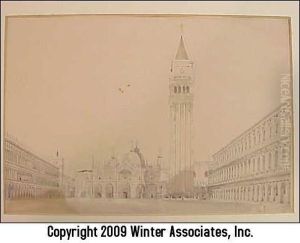Boscoli Luigi Paintings
Luigi Boscoli, an Italian painter of the late Renaissance period, was born in 1582, in a time of great artistic ferment in Italy. His life and career were deeply intertwined with the rich cultural and artistic heritage of his homeland, contributing to the transition from the High Renaissance to the early Baroque era. Although not as widely recognized as some of his contemporaries, Boscoli's work provides valuable insights into the evolving styles and themes of early 17th-century Italian art.
Boscoli received his initial training in the arts within the vibrant circles of Florence, a city that was a crucible for artistic innovation during the Renaissance. The influence of Florentine masters, including the works of Michelangelo, Raphael, and Leonardo da Vinci, is evident in Boscoli's early works. However, he also drew inspiration from the Mannerist movement, which was characterized by its complex compositions, elongated figures, and vibrant colors. This blend of influences allowed Boscoli to develop a distinctive style that balanced classical ideals with the more expressive qualities of Mannerism.
Throughout his career, Boscoli was known for his religious and mythological scenes, which often featured dramatic narratives and a keen attention to detail. His paintings are marked by their emotional intensity, a hallmark of the emerging Baroque sensibility that would come to dominate European art in the 17th century. Despite his skill and contributions to the Italian art scene, Boscoli's work was somewhat overshadowed by the towering figures of his time, such as Caravaggio and Annibale Carracci, whose innovations in chiaroscuro and composition would define the Baroque era.
Boscoli's career also reflected the broader trends in Italian society and culture during his lifetime, including the Counter-Reformation, which sought to reassert the power and influence of the Catholic Church through the arts. In this context, Boscoli's religious works can be seen as part of the Church's effort to communicate its messages through visually compelling narratives that combined spiritual depth with artistic excellence.
Luigi Boscoli died in 1627, leaving behind a body of work that, while not as prolific or widely celebrated as some of his peers, offers a unique window into the transition between the Renaissance and Baroque periods in Italian art. His paintings, though less known today, continue to be studied by art historians for their contribution to the understanding of this pivotal era in European art history.
